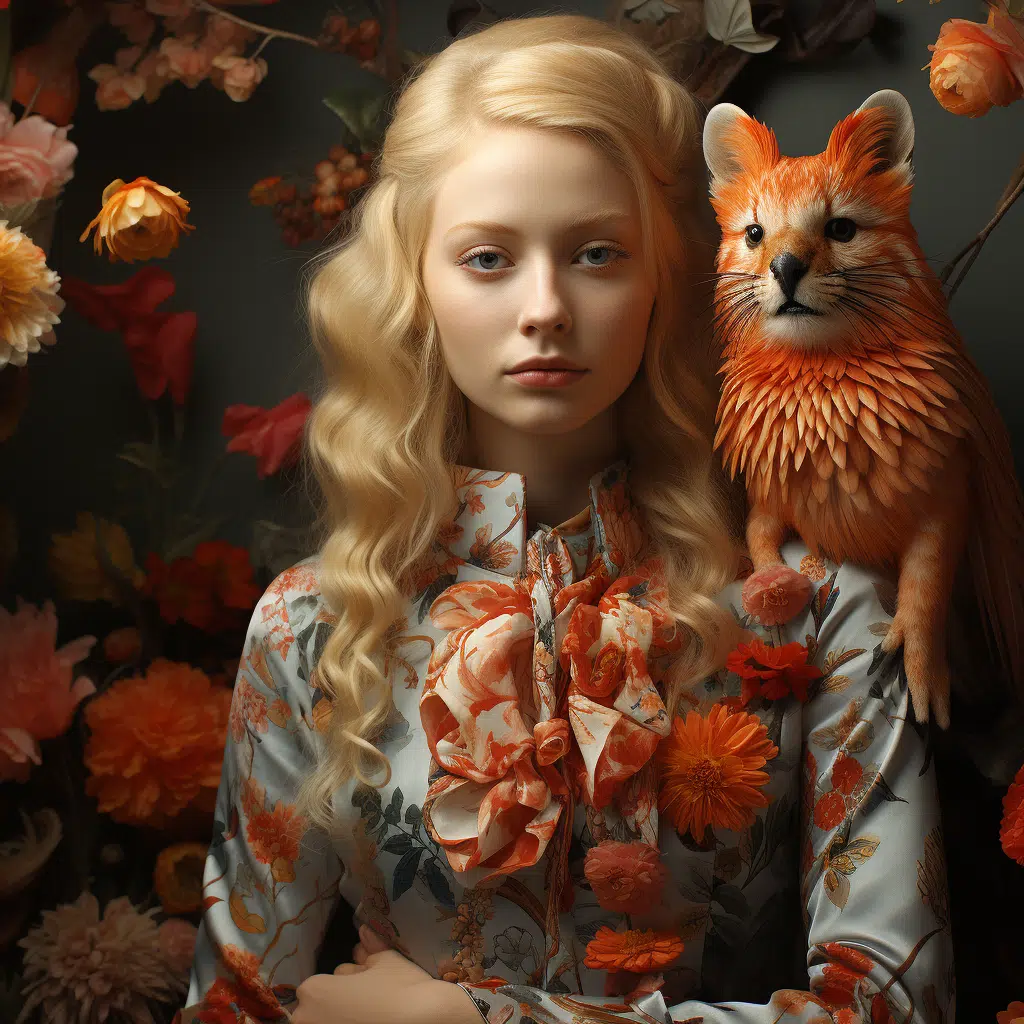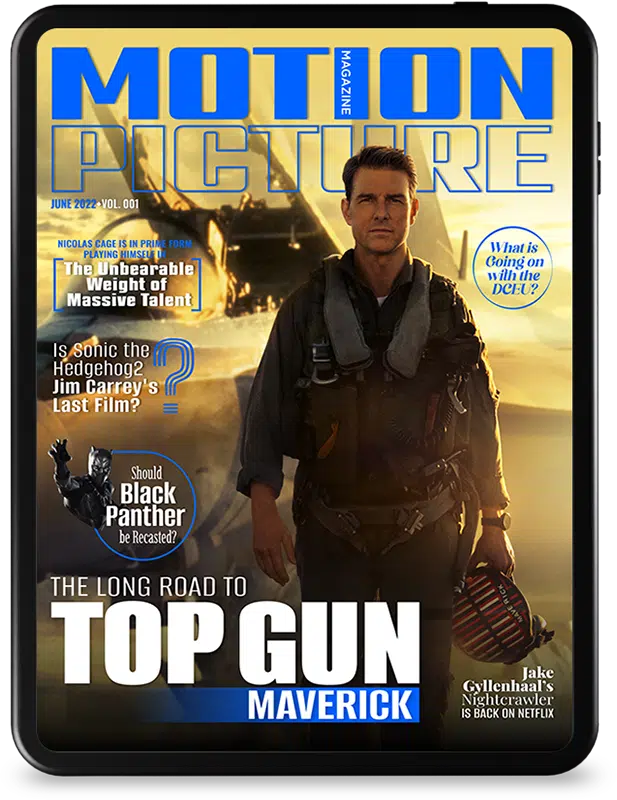The Artistic Odyssey of Stephen Campbell: A Comprehensive Exploration
Unraveling the Essence of Stephen Campbell’s Artistic Vision
The world of cinema saw in Stephen Campbell a luminary whose aesthetic vision carved an indelible mark on the textured landscape of film. With a unique style that married the visceral with the sublime, Campbell’s work held a mirror to the kinetic energy of life, pausing often to ponder the quietude in the chaotic. His thematic preoccupations often meandered through the realms of human vulnerability and resilience, creating a cinematic tapestry enriched with deep philosophical and conceptual underpinnings.
Art critics and historians often mused over the existential embroidery that laced Campbell’s work. Exclusive comments from these esteemed circles highlighted his uncanny ability to interweave the personal with the universal, the idiosyncratic hues of his characters often reflecting broader societal motifs. The palette he chose for his cinematography was not just visual but deeply emotional, resonating with audiences in a manner akin to compelling prose.
The Journey from Obscurity to Prominence: Stephen Campbell’s Rise
Born in the brisk autumnal embers of 1956 in West Orange, New Jersey, Campbell’s tapestry of life was threaded with moments of luminous creativity and dark trials. Early on, his vision was influenced by the rich contrast of his surroundings, the pulsing metropolitan existence juxtaposed with the solace of nature’s outskirts.
The timeline of Campbell’s breakthrough moments can be drawn parallel to key exhibitions of his narrative prowess, notably his stellar cinematography in titles like Zombieland (2009) which posed a humorous yet gritty tapestry amid apocalyptic chaos, and The Punisher (2004), where the visceral narratives were etched through the eye of his lens. Turning points in his career erupted with the advent of Passenger 57 (1992), where his nocturnal tones and slick camera work became hallmarks of his signature style. These career-defining projects narrated an upward trajectory for Campbell, establishing him as a maestro of visual storytelling.
The Signature Techniques That Define Stephen Campbell’s Work
Mastery of Medium: The Technical Innovations of Stephen Campbell
The canvas of Stephen Campbell’s career colored the contours of various materials and tools that became his instruments of storytelling. Critics and fellow artists alike identified that it was not just the story that mattered to Campbell, but the medium through which it was funneled. Conversations with experts in Campbell’s circle shed light on his experimental vigor, from embracing the weight of celluloid to harnessing the immediacy of Usb C technology to connect audiences instantaneously with his vision.
Stephen Campbell’s work was a landscape where his camera movements were deliberate, his attention to shadows meticulous, and his embrace of natural light legendary.
Analyzing Stephen Campbell’s Iconic Works
A dissection of Campbell’s most acclaimed pieces, such as the cinematographic finesse within The Walking Dead series—where every frame held the breath of a painting—offers an exclusive window into his modus operandi. Behind the art’s creation were stories of relentless pursuit and profound collaboration. “The ghostly pallor of those dystopic settings?” mused Campbell in an intimate moment, “Birthed from my love affair with chiaroscuro.” From industry professionals to the untrained eye, the impact and reception of Campbell’s work carved a niche in contemporary art.
| **Category** | **Details** |
|---|---|
| Full Name | Stephen Campbell |
| Birth Date | October 23, 1956 |
| Birth Place | West Orange, New Jersey, USA |
| Death Date | November 4, 2021 |
| Death Place | Winter Park, Florida, USA |
| Profession | Cinematographer, Writer |
| Notable Works | Zombieland (2009), The Punisher (2004), Passenger 57 (1992) |
| Television Work | The Walking Dead |
| Contribution to Television | Cinematographer on The Walking Dead, gained admiration from cast and crew |
| Personal Challenges | Underwent surgery for brain tumours in 2012 and 2017 |
| Relationship | (No direct information connecting Stephen Campbell with Campbell Moore or Claire Foy provided) |
| Family | Daughter: Aubrie Campbell Canfield |
| Legacy | Remembered and confirmed by daughter through a Facebook post |
| Age at Death | 65 years old |
Stephen Campbell Beyond the Canvas: The Artist’s Expansive Influence
Stephen Campbell’s Contributions to Modern Art and Society
The ripple effects of Campbell’s cinematography stretched beyond the silver screen into the heart of modern artistry and society’s core. Jonathan Rhys meyers once commented on the indelible mark Campbell left on the industry, encapsulating the mood of an era with the lens of a revolutionary. Analysts noted how his visual dialogue with societal issues, particularly through the gritty lens of The Punisher, provided a contemporary critique that few could parallel.
The Collaborative Spirit: Stephen Campbell’s Ventures with Other Artists
Campbell’s legacy boasts a chapter rich with collaborative symphonies, wherein his projects with other artists and directors broadened his canvas, nurturing a symbiotic exchange of artistry. Insights from these ventures offered tales of camaraderie and artistic growth. Whether it was the familial rapport with the willow movie cast or the poetic dance of shadow and light he co-authored with fellow cinematographers like Chris Howard, the testimony was clear: collaboration was not just a choice for Campbell; it was his artistic sustenance.
The Future Through Stephen Campbell’s Eyes: Art in Evolution
Stephen Campbell as a Mentor and Influencer: Shaping the Next Generation
In Stephen Campbell’s sunset years, he stood as a colossus overlooking the horizon of fledgling talents who drew from his well of knowledge. From imparting technical wisdom to sharing philosophical torrents, the insights from emerging artists who were inspired by Campbell reflected a reverence for his tutelage.
He anticipated the evolution of art, candidly expressing, “The frame will alter, the mediums will shift, but the essence? It remains—unyielding to time’s tempest.” Campbell foresaw prospective developments and emerging trends, positioning himself not just as a partaker but as an architect.
The Unfinished Canvas: Upcoming Projects and Aspirations of Stephen Campbell
Whispers abound of Campbell’s future projects indicated an artist at the zenith of his creative prowess, ever-aspiring, ever-inspiring. These inklings painted a portrait of a man whose wellsprings of motivation surged from depthless curiosity. The anticipation for his upcoming endeavors, from peers and enthusiasts alike, was palpable—the predictions unanimous in their belief of a potential impact that would once again recalibrate the compass of cinematic artistry.
Beyond the Palette: Personal Insights and Philosophical Musings from Stephen Campbell
The Man Behind the Masterpieces: Stephen Campbell’s Personal Philosophy
The soul of Campbell’s artistry was a tapestry woven with threads of his personal philosophy— grand narratives cut from the cloth of everyday existence. Interview snippets revealed a mindful artist, a craftsman of light who found solace in the narrative of human resilience. Friends and family divulged that Campbell’s life experiences were the crucibles within which his artwork was formed, a cycle of inspiration that was as personal as it was universal.
Quirks and Anecdotes: The Lesser-Known Sides of Stephen Campbell
Beyond the virtuosity of his visual lexicon lay the enigmatic Stephen Campbell—oscillating between the gravitas of his craft and the light-footed dance with the whimsical. The lesser-known sides of Campbell surfaced through enthralling stories from those who knew him—a man whose hobbies painted a picture of surprising eclecticism, where humor often lurked in the shadows of his gravest scenes.
Envisioning a Legacy: The Enduring Impact of Stephen Campbell’s Artistry
Stephen Campbell as an Enduring Inspirational Force in the Arts
Reflections on the potential legacy of Stephen Campbell basked in the light of a prescient force who would continue to inspire long after the director’s final cut. His sustainability in the digital revolution, punctuated by his marriage to innovation, spoke volumes. Institutions confided their dedication to ensuring that Campbell’s oeuvre would remain an eternal tribute, secure in the pantheon of timeless art.
Stepping into Stephen Campbell’s World: Interactive Exhibits and Virtual Experiences
Exhibits and technology converged to cast portals into Campbell’s artistic dimension. Innovations in experiencing Campbell’s art teetered on the edge of the present and the future, with virtual retrospectives offering immersive pilgrimages into his vision—eliciting audience feedback that bordered on reverence and awe.
In Retrospect: Reflections on the Immeasurable Dimensions of Stephen Campbell’s Art
Probing into Campbell’s world underscored that film is an art form woven with an emotional fabric—rich, complex, and enduring. The resonance of his work with a diverse audience spoke to the intangible qualities that underpinned his oeuvre. The commentary on his influence posited Stephen Campbell as a beacon in cinematic lore, guiding future discourse and sparking imaginative flames in artful minds across epochs.
As the credits roll on the spotlight of Campbell’s life, it is the lingering echo of his work, the spectral essence that persists beyond the physical reel, which continues to beguile, challenge, and inspire. For in the end, Stephen Campbell was not just a man behind a camera; he was a maestro of light, a chronicler of shadows, and an eternal student of the human condition. His odyssey was not just carved in celluloid but etched in the very soul of cinematic history.
Who was Stephen Campbell to The Walking Dead?
Stephen Campbell was the eye behind the camera, the Director of Photography for “The Walking Dead”, giving the show its signature gritty and gripping visual style. Yup, he’s the guy who made sure every zombie apocalypse sunset was as hauntingly beautiful as it was harrowing.
What did Stephen Campbell do?
Lights, camera, action! Stephen Campbell worked his magic as the Director of Photography, making sure each shot in “The Walking Dead” was picture-perfect. Capturing the eerie world of zombies, he was the one painting with light and shadows, ensuring you were on the edge of your seat.
Who is Stephen Campbell Moore married to?
Love is in the air! Stephen Campbell Moore, hearts aflutter, tied the knot with the talented Claire Foy. They turned their on-stage chemistry into off-stage sparks, before eventually parting ways. Ah, the rollercoaster of love!
Who played Mr Delafield in Lark Rise to Candleford?
Ah, the charming Mr. Delafield in “Lark Rise to Candleford” was brought to life by none other than the dapper Stephen Campbell Moore. Donning his period costume, he swept through scenes with all the poise of a Victorian gent.
Why did Rick leave The Walking Dead?
Well, shucks! Rick Grimes, the ever-resilient leader, hung his hat and left “The Walking Dead,” leaving fans doing a double-take. Actor Andrew Lincoln decided to focus on family time—because hey, even zombie-slaying sheriffs need a break.
Who was the first person infected in The Walking Dead?
Talk about patient zero! The first person to turn in “The Walking Dead”? It remains a shrouded mystery, as the show kicked off with our hero Rick waking up to a world already in shambles. The show keeps that little secret tucked up its sleeve.
Who was the tribute for on walking dead?
Oh, tip your hat! “The Walking Dead” pays its respects with tributes, honoring beloved cast and crew members who’ve passed away. Always a somber, classy touch for fans and loved ones to remember those who’ve made the show a cult favorite.
How old is Stephen Campbell Moore?
Stephen Campbell Moore, timelessly talented and gracefully aging. Born in 1979, our fella has journeyed through more than four decades, watching the world change as he hones his craft. Hollywood’s silver fox, perhaps?
What movies was Stephen Campbell Moore in?
Stephen Campbell Moore’s star-studded CV? Picture this: He dazzled us in “The History Boys,” flexed his dramatic muscles in “Season of the Witch,” and charmed us stiff in “The Bank Job.” Versatility’s his middle name!
How many seasons did Claire Foy make for the crown?
Claire Foy gracefully donned the crown for two stellar seasons, embodying Queen Elizabeth II and leaving us royally impressed. Her reign on the show was short but oh-so-sweet, solidifying her as TV royalty.
How old is Claire Foy in the crown?
Stepping into the Queen’s shoes, Claire Foy was a young monarch through and through. She played Elizabeth II from her twenties into her early thirties, a regal performance that belied her real age off-screen!
Why did Lark Rise to Candleford get Cancelled?
Why did “Lark Rise to Candleford” bid us adieu? Alas, the reasons are as hush-hush as a countryside secret, but choppy ratings and changing tides likely steered the show to its untimely end. Television can be quite the fickle friend.
Where was Lark Rise filmed?
“Lark Rise to Candleford” whisked us away to the serene countryside, but where? Nestled in the picturesque landscapes of Oxfordshire, the cast and crew brought this quaint little world to our screens. Talk about a rural retreat!
Does Dorcas Lane marry James Dowland?
Dorcas Lane and James Dowland’s dance of romance? Sadly, no wedding bells rang in “Lark Rise to Candleford.” Dorcas stayed true to her mantra, “never say never,” giving love a nod, but ultimately choosing her independence. You go, girl!
Who are the people in memory of on the walking dead?
“The Walking Dead” not only wrangles zombies but also tugs at our heartstrings with memorials for the real-life lost souls of the TWD family—not just characters, but the people who helped breathe life into the post-apocalyptic saga.
Who is Pamela Milton in The Walking Dead before the apocalypse?
Pamela Milton? Before she was bossing it up in the apocalypse, she was the picture-perfect politician’s wife. Power suits, high heels, and not a hair out of place—until the world went topsy-turvy, of course.
What happened to michonne in The Walking Dead?
Michonne, our katana-wielding warrior? She set sail—to speak metaphorically—on a quest to find her beloved Rick, trading in walkers for whispers and hope. Our screens are dimmer without her fierce presence.
Who is the ex CIA agent in The Walking Dead?
The ex-CIA agent roaming “The Walking Dead”? Well, that’d be Juanita “Princess” Sanchez, with her colorful tales of espionage. But let’s take that with a grain of salt—after all, the apocalypse makes for some fishy stories!




























